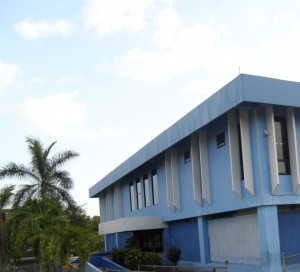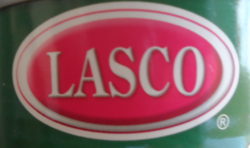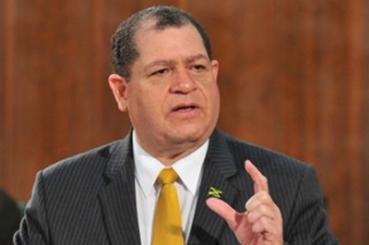 Jamaica has been caught in a high interest rate for two decades which was brought down by 2010 where they have remained. But banks’ lending interest rates have remained between 15-20 percent.
Jamaica has been caught in a high interest rate for two decades which was brought down by 2010 where they have remained. But banks’ lending interest rates have remained between 15-20 percent.
The spreads are the highest in the world while return on equity is at 20 percent but 9 percent in other countries. This is madness and we talk about lack of investment, the former Minister of Finance, Audley Shaw stated. Shaw was Speaking at the Jamaica Stock Exchange Investments and Capital Markets conference where he lambasted the present government for lacking a vision for economic grow and development. Shaw who was critical of government’s decision to spend some $350 million on the Tivoli enquiry but refuses to find $15 million to have the FINSAC investigations report completed, dealt with a series of issues that he feels should be implemented to get growth going in Jamaica
He indicated a number of impediment to economic growth such as high interest rates, high energy, inadequate trained workers, high security cost, high cost of doing business, minimum tax. We are in trouble, the state of our non-competitiveness is clear to see, mitigating against investments and growth Shaw told the attentive audience. But Shaw stated that Jamaica’s location is good, we have an advantage that our English speaking capability is good. He pointed out that the country needs to drive investment in the small medium enterprises sector. Pointing to the issue of removal of incentives, he said rather than abandoning incentives we need to provide certain incentives especially those that our competitors enjoy.
Shaw stated that the government needs to reverse the hike in in stamp duty and transfer tax, according to him when he reduced stamp duty and transfer on property tax he was told by players in the real estate market that the market took off.
Leave the junior market and put back the ten year tax holiday was not the official theme of the conference but it may well have been as speaker after speaker had the same refrain, Shaw was no exception as he implored the Minister And remove the ending of the 2016 terminal day.
Shaw lashes government & banks
Jamaica’s inflation outlook lowered
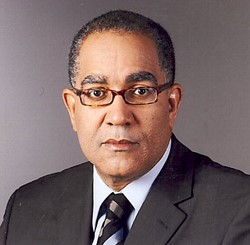 Bank of Jamaica Governor, Brian Wynter stated that the Bank’s outlook for inflation has changed and he now discloses that the Bank’s forecast to September 2015 was for 12-month inflation to be in the range of 3 to 5 percent, Governor Wynter confirmed that monetary policy decisions focus on the Bank’s forecast for inflation six to nine months ahead.
Bank of Jamaica Governor, Brian Wynter stated that the Bank’s outlook for inflation has changed and he now discloses that the Bank’s forecast to September 2015 was for 12-month inflation to be in the range of 3 to 5 percent, Governor Wynter confirmed that monetary policy decisions focus on the Bank’s forecast for inflation six to nine months ahead.
The governor was speaking at a special media briefing today.The outlook was derived from the changed inflation environment, the Governor stated. Inflation for November and December 2014 was negative, contributing to inflation of minus 0.8 percent for the December quarter and for the calendar year 2014, inflation was 6.4 percent, down from 9.5 percent in 2013.
Wynter said that the exchange rate, depreciation for the fiscal year to 20 January was 5.3 percent which was slower than a year ago when it was 8.1 percent. The Bank expected that the depreciation would slow further because of changes in two fundamentals that drive exchange rate determination: net demand on the current account of the balance of payments and the difference between inflation in Jamaica and inflation in the United States.
The Governor went on to say, “the current account deficit had narrowed dramatically and therefore, net demand from that source was much lower. In addition, the significant decline in the international price of oil had turbocharged the process. Meanwhile, the new inflation outlook significantly narrowed the inflation differential. For these two reasons the Bank expected that exchange rate depreciation will now slow down.”
Treasury rates at 18 months low
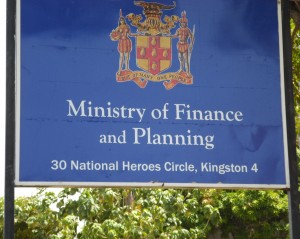 The latest results for Treasury bill auctions, show a decline in the interest rates on all three instruments offered to the public. Importantly, the 182 days note fell to the lowest level, since June 2013, when the rate was 7.12 percent.
The latest results for Treasury bill auctions, show a decline in the interest rates on all three instruments offered to the public. Importantly, the 182 days note fell to the lowest level, since June 2013, when the rate was 7.12 percent.
At the latest auction dated December 19, 2014, the average rate on 28 days instrument, ended at 6.38 percent. The rate fell from sharply, from 6.71 percent in November and 6.826 percent in October as $686 million chased the $400 million on offer.
Investors, demand for the 91 days Treasury bills offered, continued to climb, dropped to only $531 million from to $1.042 billion for the November auction. Demand for the longer-term 182 days instrument, was for $942 million for the latest auction in which the amounts available was $400 million for all three Treasury bills on offer.
The Treasury bill for the 91 days period, Friday, December 19 to mature on Friday, March 20 next year, attracted an average yield of 6.956 percent a moderate fall from November’s 7.052 percent, and 7.336 percent in October and 7.46952 percent, at the September auction. At the August auction the average rate out turn was 7.46767 percent. The yield for July was an average of 7.63643 percent, for the June issue 7.65893 percent and 8.2 percent in May, for the Treasury bill of same duration.
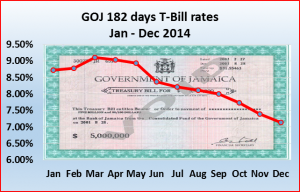 The offer of 182 days duration, maturing on June 19, 2015, attracted $925 million for the $400 million on offer resulting in an average interest rate yield of 7.14 percent, down from 7.387 percent at the November’s auction. At the October auction the average rate declined to 7.73187 percent from 7.99887 percent, at the September auction, 8.11578 percent, in August, 8.21982 percent at the July’s auction and 8.36502 percent for the June issue, of the same duration. At the May auction, the rate came out at 8.932 percent.
The offer of 182 days duration, maturing on June 19, 2015, attracted $925 million for the $400 million on offer resulting in an average interest rate yield of 7.14 percent, down from 7.387 percent at the November’s auction. At the October auction the average rate declined to 7.73187 percent from 7.99887 percent, at the September auction, 8.11578 percent, in August, 8.21982 percent at the July’s auction and 8.36502 percent for the June issue, of the same duration. At the May auction, the rate came out at 8.932 percent.
Jamaica’s trade deficit slips to September
Jamaica’s trade deficit for the first nine months of 2014 widened marginally by US$27 million to US$3.28 billion compared to US$3,26 billion in the similar 2013 period. Imports during the period fell by US$81 million to US$4.4 billion.
Exports fell by US$108 million or 8.8 percent to US$1.11 billion compared to the same period in 2013. “During the nine-month period, there was a general downward trend in the value of imports, with six of the ten commodity groups registering declines,” Statin stated. “Mineral Fuels, etcetera” the main contributor, fell US$9 million to US$1.56 billion. “Chemicals” by US$108 million or 18.8 percent, to US$464 million. Lower imports of ethanol products were the primary contributor to this decline.
Compared to the 2013 period, Machinery and Transport Equipment valued at US$681 million grew by US$24 million due mainly to higher expenditure in the, divisions telecommunication, sound recording and reproducing apparatus, office machines and automatic data processing equipment, power generating machinery and equipment, machinery specialized for particular industries and electrical machinery apparatus and appliances. Manufactured Goods grew by US$14 million to US$449 million. “Misc. Manufactured Articles” increased by US$19 million to US$323 million.
Traditional Domestic Exports| During January to September 2014, the country’s earnings from traditional exports moved up by US$15 million to US$605 million, largely due to increases in Mining & Quarrying. The first nine months of 2014 Non-Traditional domestic exports were valued at US$456 million, 18.4 percent or US$103.0 million below the US$559 million recorded in the similar 2013 period.
GOJ targets on track but
The primary surplus at the end of November is $54.4 billion against a target of $48.2 billion. The excess was achieved although revenues are off by $6.8 billion a slightly worse position than at October by $500 million with a revenue shortfall then of $6.28 billion. Tax revenues fell short by $700 million in November and was the major reason for the shortfall in the month.
On the payment side the wages bill in on target with very little variation but other cost fell by $1.36 billion in November bringing the year to date cut to $2.8 billion. Interest saved climbed to $3.4 billion in November from $3 billion in October. Capital expenditure is underspent by a further $2 billion in November and $7.4 billion so far for the fiscal year.
Government borrowed $10 billion less on the local market but foreign borrowing is up by $73.4 billion but loan repayments are in line with original forecast.
The fiscal deficit that was targeted at $34.4 billion is down by $9.6 billion to $24.75 billion and is better than the deficit at the end of October when it reached $26.8 billion.
Tax on interest brought in $2.9 billion in revenue over budget, PAYE is up by $1.7 billion. The shortfalls were mostly local GCT down by $4.3 billion, Corporation tax $4.6 billion, Special consumption $2.2 billion, International traded $2.4 billion and grants $1.2 billion.
Jamaican prices fall expect more
 Prices increased for October, by a mere 0.1 percent over September this year, in line with the increases in February and June but above a negative 0.3 percent in April. For November, this year, The Statistical Institute of Jamaica (Statin) reveals that as at the Consumer Price contracted by 0.5 percent versus October 2014.
Prices increased for October, by a mere 0.1 percent over September this year, in line with the increases in February and June but above a negative 0.3 percent in April. For November, this year, The Statistical Institute of Jamaica (Statin) reveals that as at the Consumer Price contracted by 0.5 percent versus October 2014.
The November fall, represents the lowest inflation rate since the start of the 2014. The division ‘Food and Non-Alcoholic Beverages’ declined by 0.1 per cent, and was mainly due to lower prices for vegetables. A reduction in the cost of electricity and lower rates for water and sewage were the key factors influencing the division ‘Housing, Water, Electricity, Gas and Other Fuels’, which declined by 3.6 percent. The latest inflation data brings the year to date level to 6.7 percent and the final number for 2014 should end up closer to 6 percent with the price of oil continuing to fall on the world market and local food products coming back in good quantities.
US$ demand down $1B PA, supply up
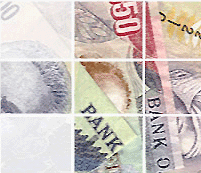 Buying of foreign currency demand fell sharply in the first 5 days of December, this year compared with the same period in 2013, at a level that would translate to over $1 billion per year, if sustained.
Buying of foreign currency demand fell sharply in the first 5 days of December, this year compared with the same period in 2013, at a level that would translate to over $1 billion per year, if sustained.
At the same time purchases by dealers climbed US$4 million, at a rate around US$300 million per annum. According to data compiled by IC Insider from the daily Bank of Jamaica trading reports, a total of $163 million were purchased this week, this compares favourably with the $159 million purchased by dealers in the 2013 period. While dealers sold US$175 million in the first 5 days of December, last year, this year only US$155 million was sold, a fall of US$20 million, this translates to just over $1 billion per year.
The near evenest of inflows and outflows has not stemmed the slippage in the exchange rate versus the US dollar, after a period of slight revaluation between August and October. Bank of Jamaica stepped in by increasing their take from the market from 15 percent per day to 20 percent from November and even intervened on a number of days our source informed us, thus reversing the appreciation of the Jamaican dollar.
The Jamaican dollar ended 2013 at $106.38 to one US dollar and reached $113.79 on Friday, to one US dollar. The slippage since the start of the year is just 7 percent, and is in line with inflation to October and would result in a slight gain in competitiveness in the currency based on inflation differential between Jamaica and the USA, if inflation were to remain around these levels.
Last year December the rate started at $105.87 and ended at $106.38 with most of the slippage occurring in the first half of the month. Flows of foreign exchange usually pick up in the second half of December and is likely to slow the rate of decline, unless Bank of Jamaica determines that the currency needs to slip some more, but they could wait until 2015 to effect any needed adjustment to the rate, with 2014 almost over. With the price of oil well under US$70 per barrel the demand for foreign currency will fall and should allow BOJ to lower interest rates while building up the reserves in the first half of 2015 at least.
This market is going much higher
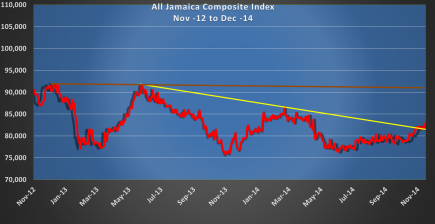
Graph showing market breaking resistance at 82,000, yellow line on the way to 91,000 points brown line.
Technically, the market has broken through resistance at 82,000 points on the all Jamaica Index on the November 19, retreated a bit but seems to be moving away from that point now. The next target is 91,000 points, the level reached in December 2012, which could well be reached by year end. The latest break of the 82,000 is the first of three attempts that the market has made to break through the descending trendline going back to late 2011 that has been successful. Supporting the move upwards, is the crossover of the short-term moving average line over the medium term moving average, the shortage of supply of most stocks and the lowering on Treasury bill rates, starting earlier this year and continuing up to the latest auction in November.
In trading on Friday, Grace Kennedy was the leading stock trading on Friday with 2 million units with a value of $120.7 million this was followed by Scotia Group with 258,000 shares valued at $5.2 million and Carreras with 123,000 units with a value of $4.5 million.

Grace off
Gains| The stocks ending with gains on Friday are, Caribbean Cement ending with 1,164 units trading with a gain of 4 cents at $2.44. Carreras completed trading with 123,082 shares, the price rose 1 cent to $37, Desnoes & Geddes saw trading in 29,970 units and put on 9 cents to $4.69, Jamaica Broilers concluded trading with 11,700 shares changing hands with a gain of 5 cents to $4.05. Jamaica Stock Exchange concluded trading with 7,000 units, to close with a gain of 7 cents to $1.57, National Commercial Bank closed with 13,210 units and put on 4 cents to $18.20, Sagicor Group finished with 67,188 shares to end with an increase of 3 cents at $9.93. Sagicor Real Estate Fund ended with 750 shares as the price gained 44 cents to $7.25, a new 52 weeks high, Scotia Group finished trading with 257,719 shares, the price jumped 49 cents to $20.50, Seprod contributed 819 shares as the price climbed 1 cent to $12.01 and Supreme Ventures ended trading with 40,000 shares traded with a gain of 5 cents to $1.95.
Firm| The stocks in the main market to close without a change in the last traded prices are, Grace Kennedy ended with 2,009,457 shares changing hands to close at $62 and Hardware & Lumber with only 500 shares trading, closed at $6.50.
Declines| Cable & Wireless was the only main market stock to fall with a 1 cents loss to 44 cents with1,363 units.
Preference| Jamaica Money Market Brokers 7.50% preference share traded 4,000 shares trading at $2.
Minimal branch closures at BNSJa
Sharp was addressing the press, in providing an update on the group’s operation for the year to October. The local group closed their Westgate and Barnett street branches, with the opening of the new branch at Fairview, just outside of the old Montego Bay city centre. “The main branch in Sam Sharp’s square remains open. Due to the limited branch closures no provision was made in the 2014 accounts and the staff at the closed branches were absorbed within the group,” Sharp said.
 The Canadian parent had announced closure of branches and staff cut of 1,500, to trim cost and better align branches with customer demand. But Sharp stated that the local operation was always looking at ways of making the operation more efficient and will focusing on this aspect going forward.
The Canadian parent had announced closure of branches and staff cut of 1,500, to trim cost and better align branches with customer demand. But Sharp stated that the local operation was always looking at ways of making the operation more efficient and will focusing on this aspect going forward.Business as usual locally, comes against the back ground of Scotia Group making profit of $10 billion versus nearly $11 billion in 2013, but more importantly, the banking operations made profit of $3.935 billion vs $3.99 billion in 2013 after absorbing additional asset tax cost of $260 million.
Negative Inflation for rest of 2014?
 Prices increased for October rose by a mere 0.1 percent over September this year, and is in line with the increase in February and June but above a negative 0.3 percent in April. The rate for the rest of the year could be negative based on developments locally and overseas.
Prices increased for October rose by a mere 0.1 percent over September this year, and is in line with the increase in February and June but above a negative 0.3 percent in April. The rate for the rest of the year could be negative based on developments locally and overseas.
The inflation rate, the Statistical Institute of Jamaica (Statin) reveals was mainly due to a 0.2 percent increase in the index for the category of Food and Non-Alcoholic Beverages and 0.3 per cent increase in Housing, Water, Electricity, Gas and Other Fuels. This increase in the index for the latter division was mainly as a result of higher water and sewerage charges in October 2014 Statin stated. A 0.8 percent fall of prices in transportation, moderated the effect of the increases, in the other areas. Statin said that the ‘Transport’ division’s index fell as a result of the decline in the cost of airfares, as well as the price of fuel.
- « Previous Page
- 1
- …
- 509
- 510
- 511
- 512
- 513
- …
- 516
- Next Page »



